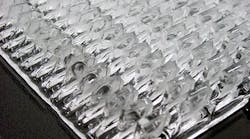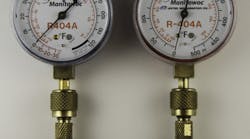Many restaurant or other food service businesses use water. Large commercial dishwashers, ice machines, and soft serve machines come immediately to mind. With any sort of open system that uses water, leaks and other problems will develop over time and must be repaired. Here's a closer look at ice machine troubleshooting, but many of the same principles apply to other appliances.
When you get a call to troubleshoot an ice machine, the first thing to focus on is the water. Is there a part of the machine that isn't getting enough water, is getting too much water, or is getting unfiltered water?
Common Ice Machine Issues
Malformed cubes. If the cubes look funny or are too small, you may not getting enough water into the machine. Either there is something wrong with the plumbing or your water filter is clogged. Left too long and your evaporator can freeze up and halt production, or even cause damage to the machine. Like any other pump, it's rough on the pump to run it dry.
Oversized cubes or water leaking into the machine. If the inlet water valve is busted and leaking water into the machine, your cubes may be larger than normal. However, if the cubes get too large they can jam up the machine and cause mechanical damage to the evaporator.
Water or air is too hot. If the water is too hot or the air temperature is too hot, then ice won't be created. Most machines have a freeze cycle timer. If the machine cannot detect ice in the evaporator before the timer goes off, it will halt production. Ice machines need to have an external air temperature under 95F and a water temperature under 90F. The easiest solution is to move the machine to a cooler location or switch to a water cooled system. If that's impossible, you'll need to improve the air conditioning in the room.
The most important guide to your ice machine is the owner's manual. Unlike a lot of machines, most ice machine manuals are very thorough about how to troubleshoot the problem and the steps to take to open the machine and tell what is wrong. If you don't have a copy of your service manual, check the manufacturer's website for more information.
Before digging into the manual, you should know the standard process for how a commercial cube ice machine works. In most machines there is an evaporator plate that holds the cubes. This plate is kept cold. When the machine detects the plate is empty, a solenoid valve clicks on and lets water flow onto the plate. When enough time has passed, the valve shuts off and the compressor kicks on to quickly cool the ice. After the ice is frozen, a small amount of heat is released through the plate to loosen the cubes, then the plate rotates to dump the cubes into a bin.
Next, check the installation guidelines and make sure that the machine complies with the instructions. For instance, if the machine isn't level then malformed ice cubes can develop. Ice cubes of uneven thickness are also a sign of a blocked purge valve. Doing a simple check for level first can save you a lot of time.
Compressor Check
- If the machine runs but isn't making ice and you cannot detect a water leak, the next thing to examine is the compressor. Study the manual for any installation requirements and make sure the refrigerant has enough pressure to cool the plate down. You may also want to clean the condenser coils and make sure there's enough air flow for the unit.
- If the machine doesn't run at all, it could still be in clean mode. Check your switches. If the switches are correct, check the power supply. If that is correct, there may be a problem with a pressure safety valve or the bin controls.
There are plenty of things which can go wrong with ice machines. Broken compressors, faulty evaporators, and more can become a situation with the machine. The first thing is always look at the simplest solution like the water line, but the first step is to conduct an overall preventive maintenance check.
Mark Masterson is communications manager, IceMachinesPlus.com.










